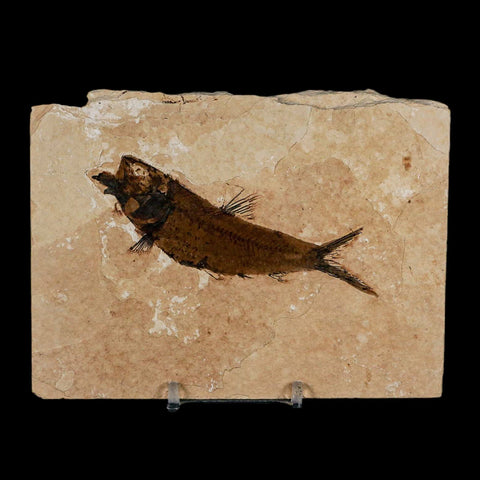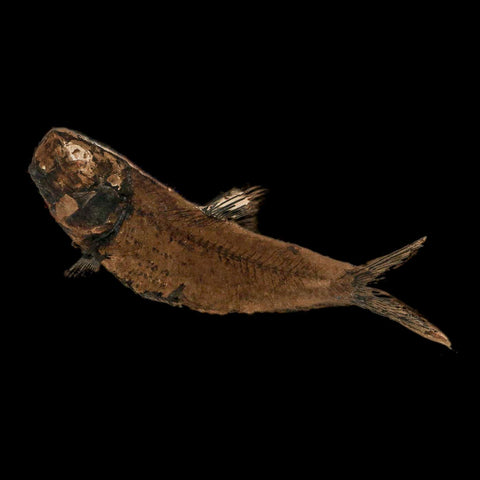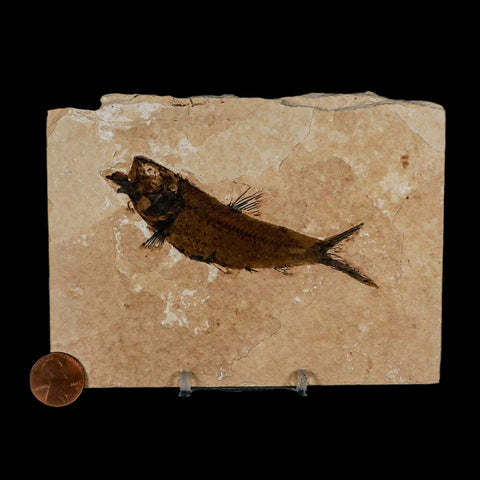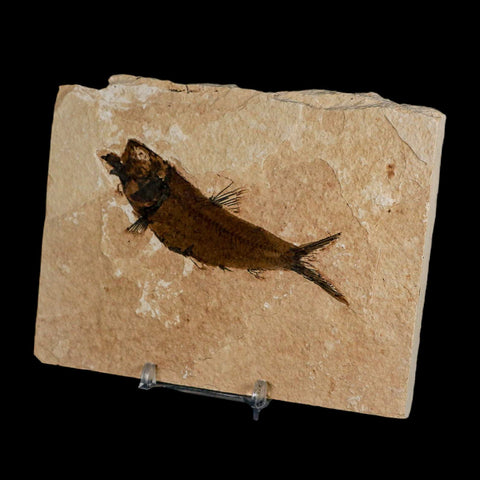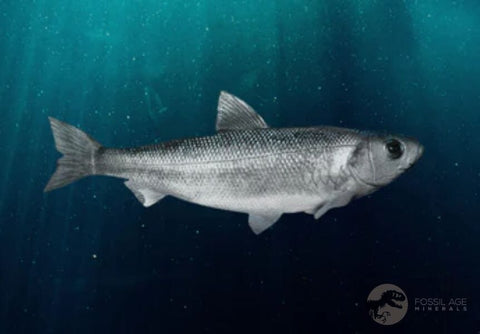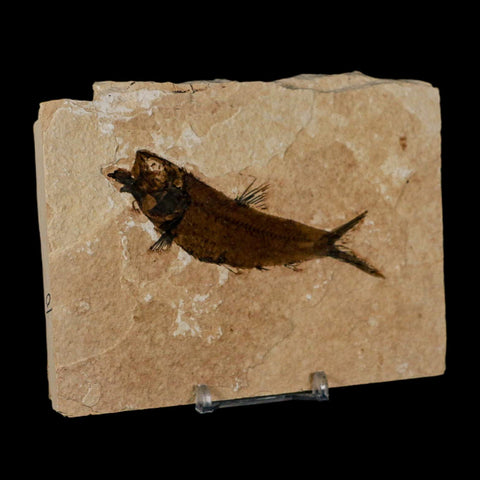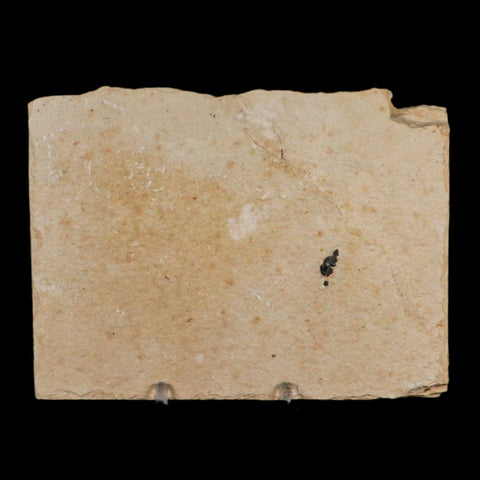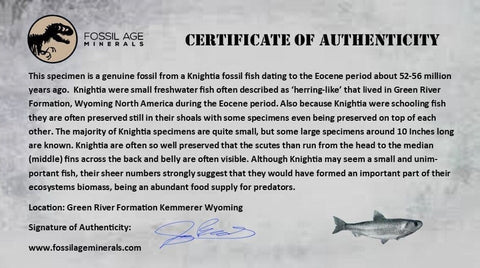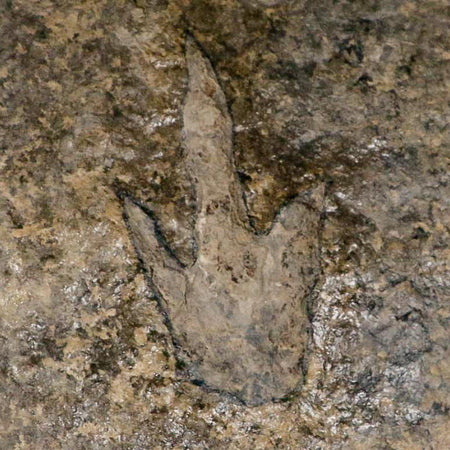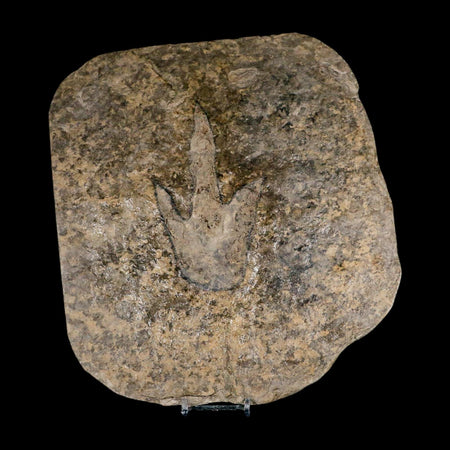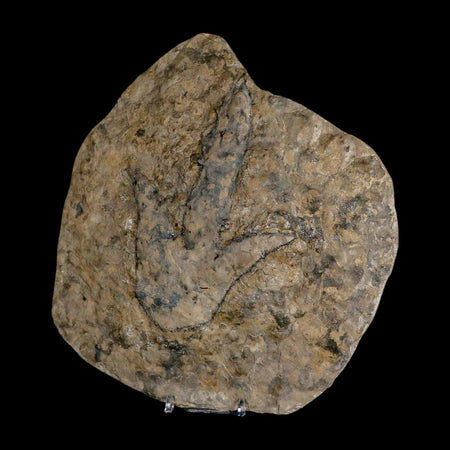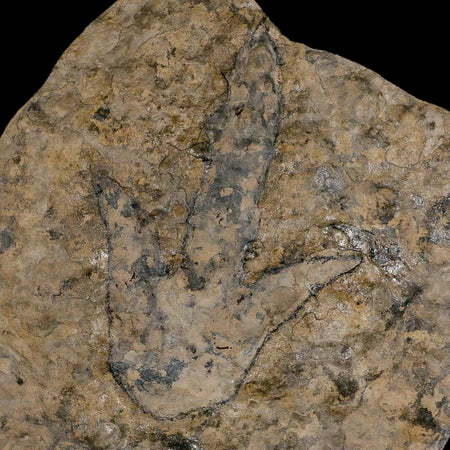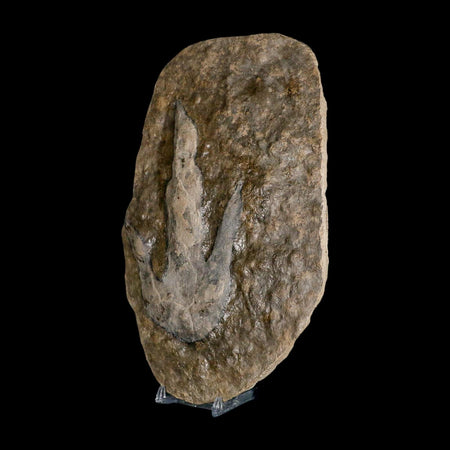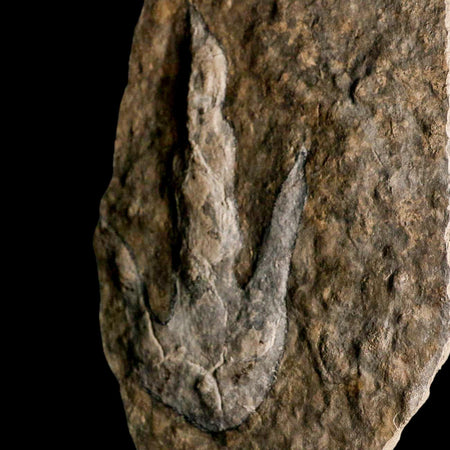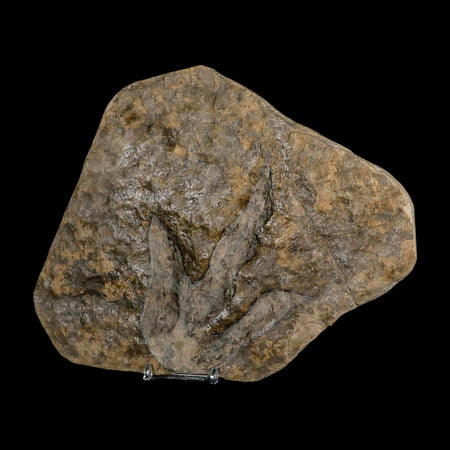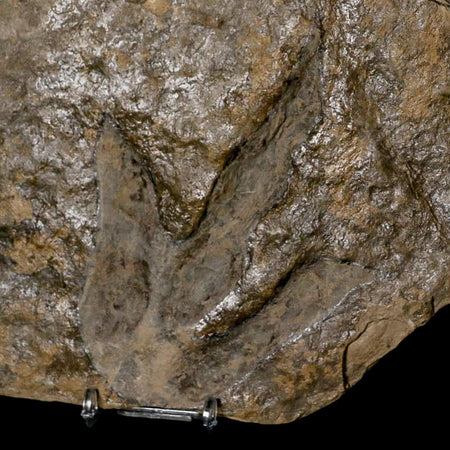3.9" Knightia Eocaena Fossil Fish Green River FM Wyoming Eocene Age COA & Stand
Location: Kemmerer, Wyoming
Weight: 8.4 Ounces
Dimensions: 5.3 Inches Long, 3.9 Inches Wide, 0.3 Inches Thick (Plate)
Fish Dimensions: 3.9 Inches Long, 1.4 Inches Wide
Comes with a Certificate of Authenticity.
Comes with a Free Stand.
The item pictured is the one you will receive.
50 million years old, Eocene age
Knightia Eocaena is the most frequently found fish in Fossil Lake and may be the most commonly preserved vertebrate fossil worldwide. As Wyoming’s State Fossil, this fish can grow up to 25 cm (10 inches) long. About fifty million years ago, Fossil Lake covered a large area of what is now southwest Wyoming. Of its original 930 square miles, about 500 square miles of sediment remain, with 230 square miles in the center containing exceptionally rich fossil deposits. Unique water chemistry slowed decay and scavenging, leading to laminated limestone layers that house the world’s highest concentration of fossil fish. These fossils, together with other aquatic life and geological features, offer an invaluable glimpse into the freshwater ecosystems of the Paleogene era.
Since the discovery in the 1870s, many perfectly preserved fossil fish have been recovered. Preserved with the fish in the laminated limestone is a complete aquatic ecosystem: cyanobacteria, plants, insects, crustaceans (shrimp, crawfish, and ostracods), amphibians (frog and primitive salamander), alligators, turtles, birds, and mammals, including the oldest pantolestid (otter-like animal). The subtropical terrestrial ecosystem surrounding the lake is also represented by rare fossils, including a horse, two snakes, lizards, two bat species, birds, an apatemyid (an arboreal insectivore), a miacod (a primitive carnivore), insects, and more than 325 types of leaves, seeds, and flowers.



